These classic French Sables Bretons Cookies, or French Salted Butter Cookies, are the most delicious cookies ever: crumbly and buttery with melt-in-your mouth texture. They are super easy to make with 5 ingredients only and will stay fresh for days!
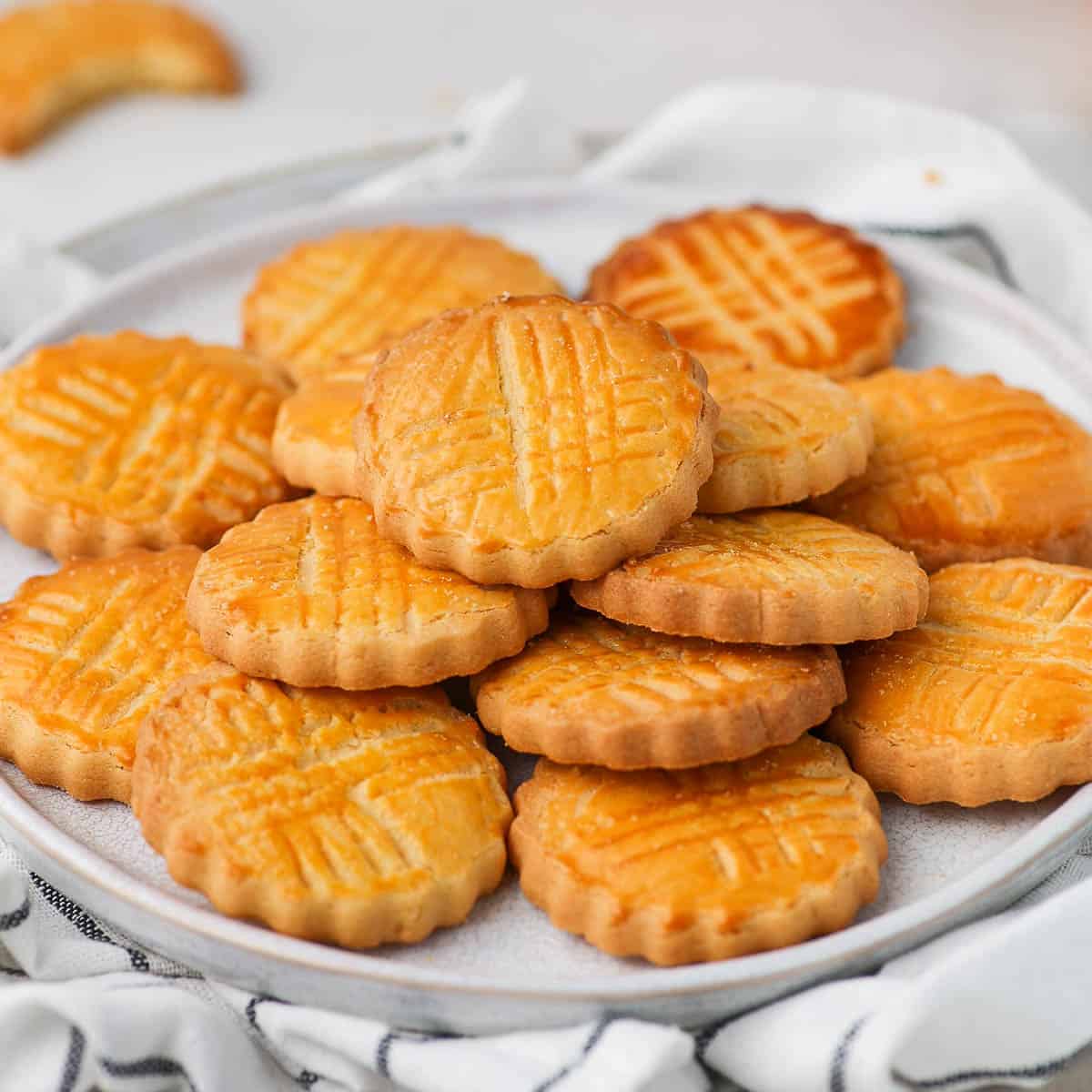
This recipe was first published in May 2019 and was updated in December 2021.
Jump to:
Why we love this recipe
The Americans have their Chocolate Chips Cookies, the Brits the Shortbread Cookies, the Aussies the ANZAC biscuits and the French... the Sables Bretons Cookies!
If you are looking for super soft or really fudgy cookies, passez-votre chemin (keep looking); these traditional Sable Breton Cookies are neither of those. Instead, they are crumbly, rich and buttery with an incredible melt-in-your mouth texture.
The combination of a sweet dough with a light touch of salt give these French cookies the best flavours.
These Sables Bretons are a great easy French recipes for school gathering, bake sale or "french themed week". Or a simple sweet treat to go with a cup of tea or coffee.
More Butter Cookies:

What is a Sable Breton Biscuit?
Sablés Bretons are traditional cookies from the Bretagne region (Brittany) in the North-West of France; a region that is famous for its high quality Salted Butter.
In French, Sablé means Sandy (just like the classic shortcrust pastry "Pâte Sablée") and Breton refers to Bretagne region. So they literally mean Sandy Cookies from Brittany! They are often just called "sablés cookies" in France.
These French cookies are relatively similar to a Shortbread but is richer thanks to the high quantity of egg yolks used in the dough. The flavours are also distinct, since the French version is using Salted Butter.
The Sable Dough is super versatile too. It can be used in many different ways other than just to make cookies, like as a base for cakes like this Lemon Meringue Cake or Mango Mousse Cake - or as the pastry shell for tarts.
Ingredients
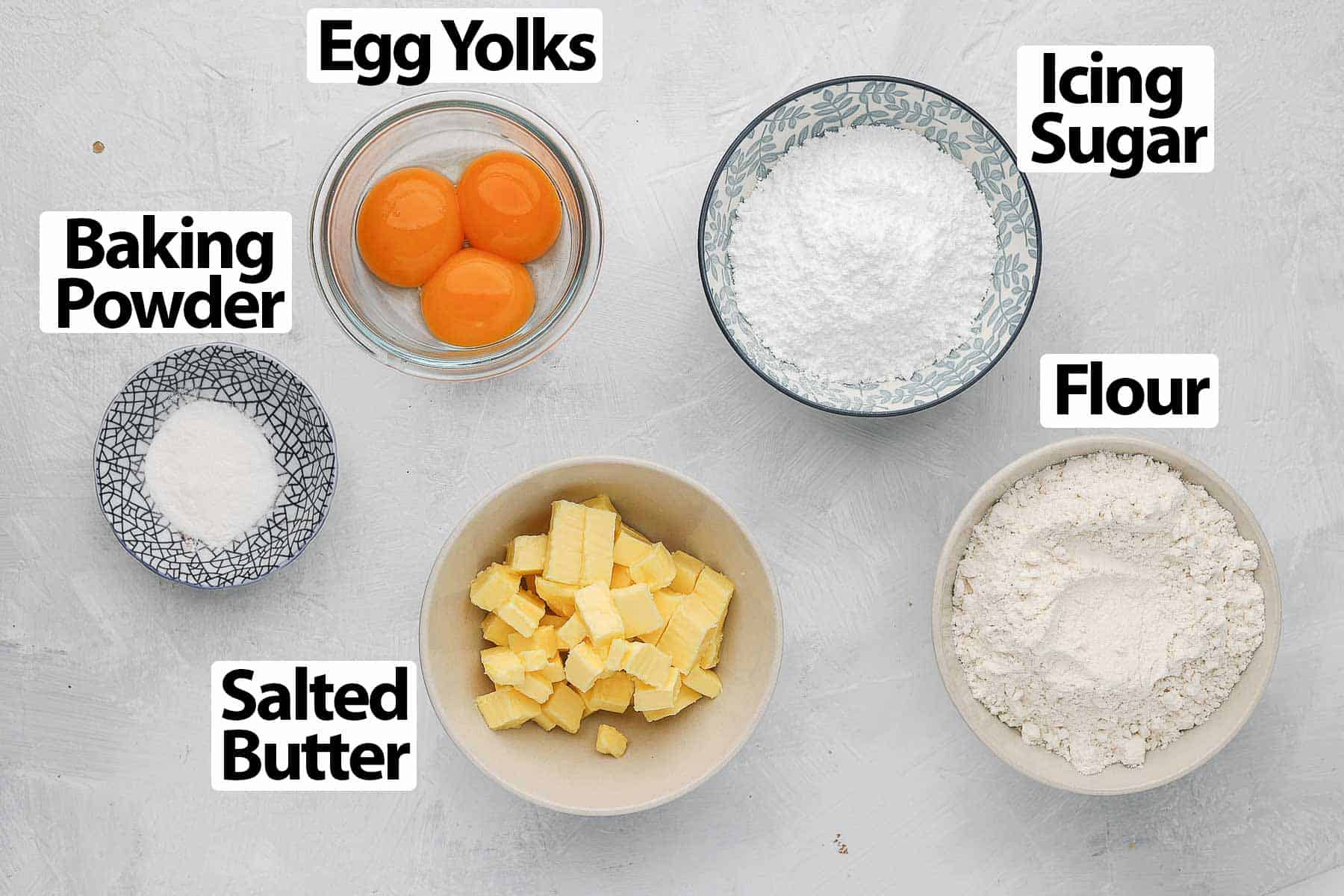
You will only need 5 simple ingredients to make these French Salted Butter Cookies (scroll down to recipe card for all quantities):
- Egg Yolks: at room temperature. Keep the Egg Whites to make meringue, macarons or Financiers Cakes.
- Icing Sugar: or Powdered/Confectioners Sugar. Make sure to sift the sugar to avoid lumps.
- Salted Butter: soft, at room temperature. A good quality butter will give you the best flavour here. It can be replaced with unsalted butter but you will need to add a little bit of table salt (or fine sea salt) to the recipe.
- Flour: Plain / All-Purpose Flour, sifted.
- Baking Powder: just a little bit to give these cookies a lift.
You can also flavour the cookies with many other ingredients like Vanilla (I recommend Vanilla Paste instead of Essence or Extract), some Lemon or Orange Zest,...
Unsalted Butter
Like always when it comes to baking, the quality of the ingredients is extremely important. In our case here, even more so as the butter is what brings flavour to these cookies.
You can make this recipe with Unsalted Butter, but the traditional way to make these "Sables Bretons" is by using Salted Butter. The Salt is essential to balance the rich flavour of the butter - so if you are to use unsalted butter, I would recommend to add about 1/2 teaspoon of Salt to the recipe.
If you can find some Salted Butter from France to make this recipe - great! But do not worry; you can also make it with salted butter you will find in your local supermarket.
Just make sure you get the best quality Butter you can find. It will really make a difference here where butter is what brings the flavours.
Note that most of the flavour of the cookies will come from the Butter - so I do NOT recommend substituting the butter for margarine, coconut oil or any other butter substitute.
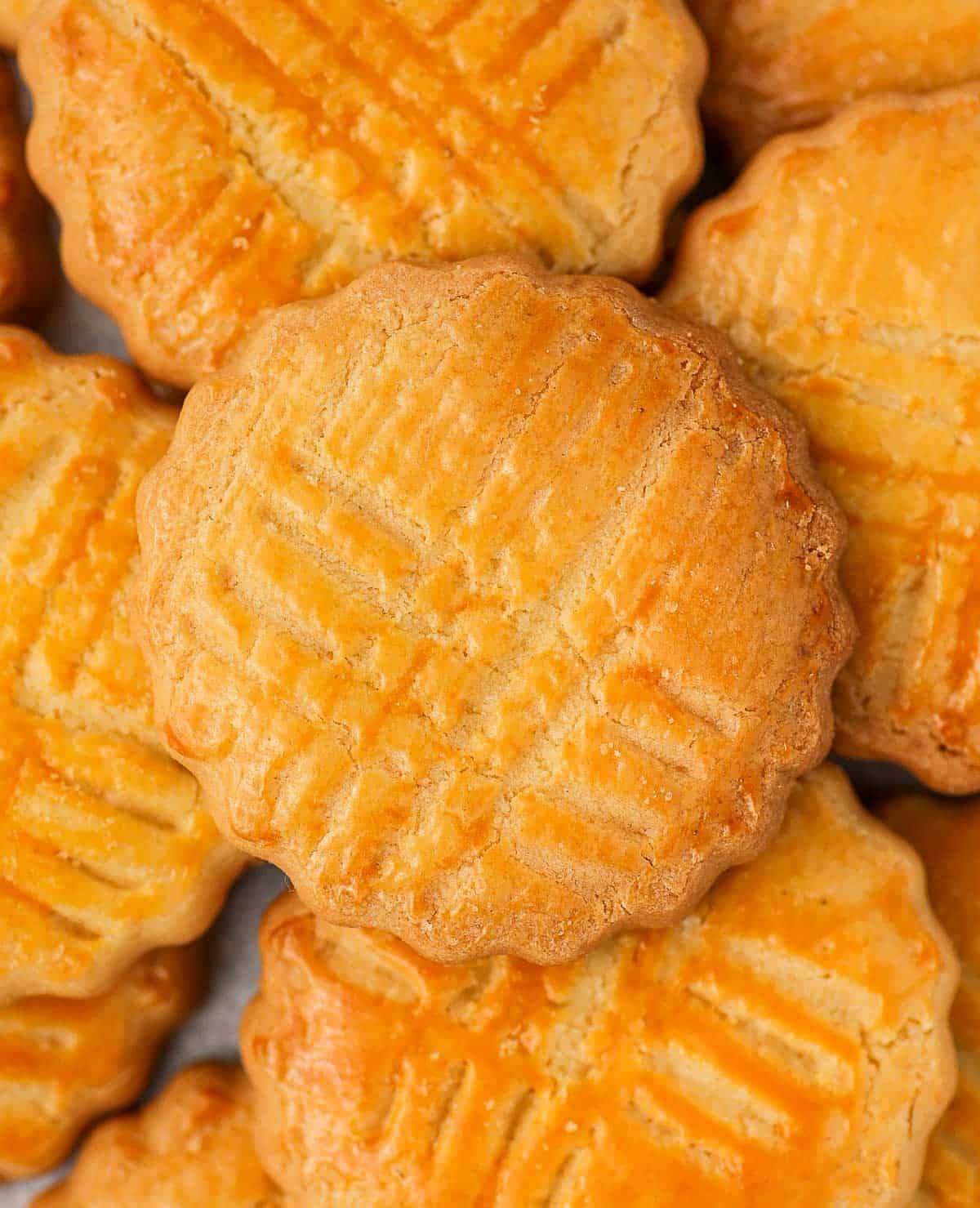
How to make Sable Breton Cookies
Before starting the recipe, take the butter out of the fridge. Cut it into small cubes and let them soften at room temperature.
- Photo 1: in a large mixing bowl, whisk together the Egg Yolks and sifted Icing Sugar. Mix for a couple of minutes - the mixture should turn paler in colour and slightly increase in volume.
- Photo 2: add the very soft butter.
- Photo 3: mix in the butter with a whisk until fully incorporated. You should get a thick, soft paste.
- Photo 4: Sift in the Flour and Baking Powder.
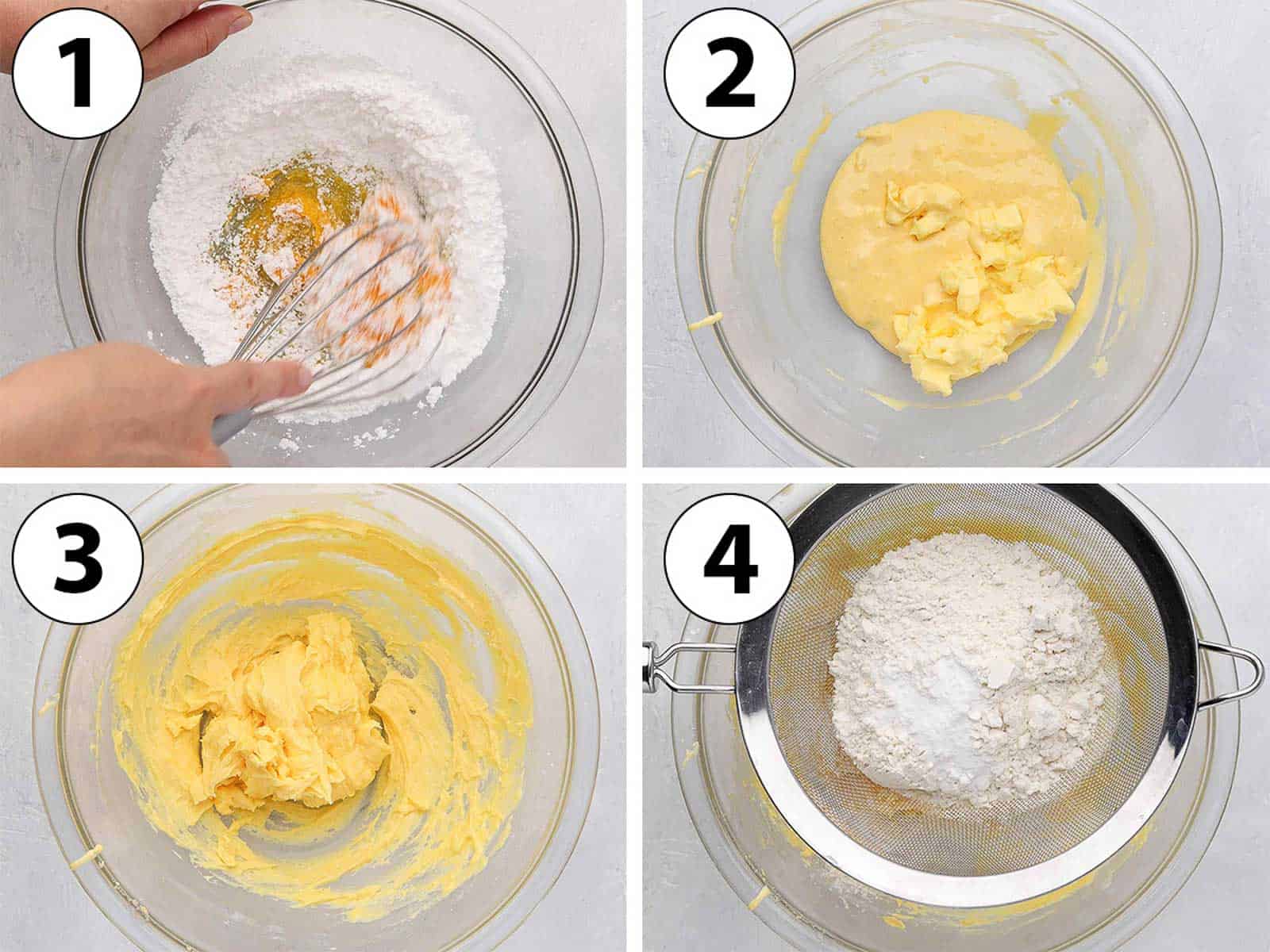
- Photo 5: Mix in the dry ingredients with a stiff spatula until you get a soft dough. Gently press the mixture on the sides of the bowl to mix all the ingredients in (see video in the recipe card below).
Alternatively, you could also mix it in by hands but you will want to work quickly to avoid melting the butter with the heat of your hands.
- Photo 6: Place the dough between two large sheets of baking paper and roll it into a large disk about 6mm (1/4 inch) thick. Transfer over a flat tray and place in the fridge to chill for at least one hour.
- Preheat your oven on 160'C / 325'F. Prepare a flat baking tray with a baking mat or parchment paper. I used a perforated baking tray and perforated baking mat for the best results.
- Photo 7: take the dough out of the fridge and remove the top sheet of baking paper. Cut out the dough using a round or fluted cookie cutter about 6cm (2,5 inch) wide.
- Photo 8: Place the cookies on the baking tray.
- Optionally, create the cross pattern with the back of a fork then brush each sable cookie with a whisked egg yolk for a golden finish.
- Bake for 15 to 18 minutes or until golden. Transfer over a cooling rack to cool down completely.
- Any leftover dough can be reassembled, re-rolled and chilled to make more cookies.
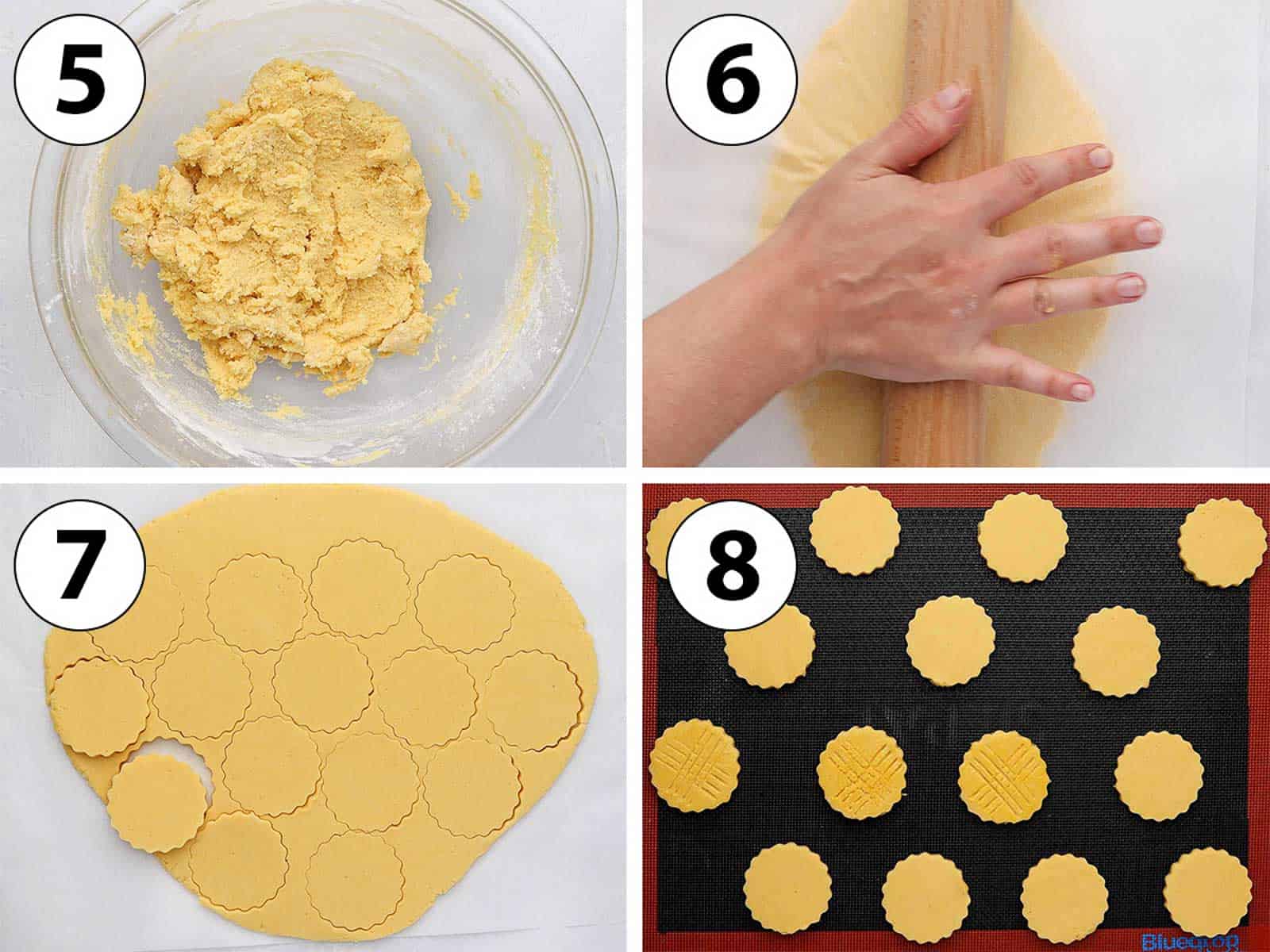
Recipe FAQs
The main difference is that most shortbreads are made without eggs (or with a small amount of egg) while sables have a high quantity of eggs. Shortbread also have a higher ratio of butter than sables.
Yes, although it is not as traditional as the cookies made with salted butter. You will want to add a little bit of fine table salt (or fine sea salt) to the dough to recreate the same flavours. Add about 1/3 to 1/2 teaspoon of salt.
I rolled these cookies to be 6mm (1/4inch) thick, but you could roll them thiner or thicker. Simply adjust the baking time accordingly. A thicker version of these cookies is called "Palet Breton" and usually baked in small round molds.
These sable breton cookies are a great plain base that can easily be customised. Add a little bit of cocoa powder to turn them into chocolate sables, add a little bit of vanilla to them or even some citrus zest.
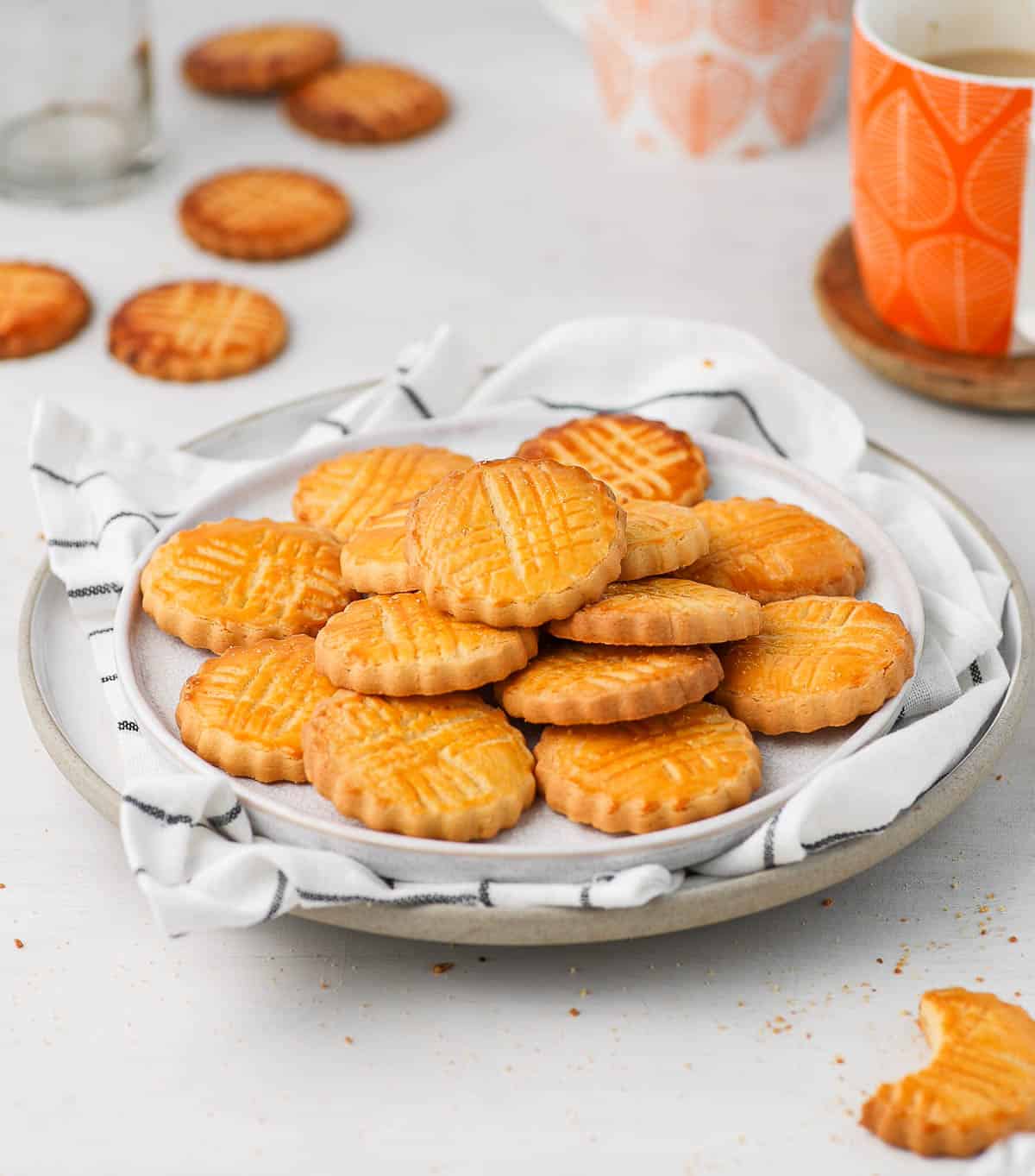
Tips for Success
- Chill the dough for at least one hour, but the cookies can be chilled for longer has well which is great if you want to prepare them in advance. The chilling is necessary for the butter to harden but also to develop the flavours.
- Use a rolling pin with thickness rings to get an evenly rolled dough with the right thickness.
- If you roll the cookies thinner or thicker - or cut them out larger, make sure to adjust the baking time accordingly.
- For the best results, use a perforated baking tray and perforated baking mat to bake the sable cookies. This will provide a better (and more even) heat distribution which will result in perfectly baked cookies.
Storing & Freezing
These Sable Breton Cookies will stay fresh for quite a long time. They are best eaten within 5 days and kept at room temperature in an air-tight container in the meantime. Unbaked, the dough should be kept in the fridge for up to a day.
These salted butter cookies can be frozen but I recommend freezing them unbaked for the best texture. You can either freeze the rolled dough (before cutting out the cookies) or cut out the cookies before freezing them.
Let them come back to room temperature for a few minutes before baking, or bake for a couple more minutes. Note that they shouldn't be frozen with the egg yolk wash on them.
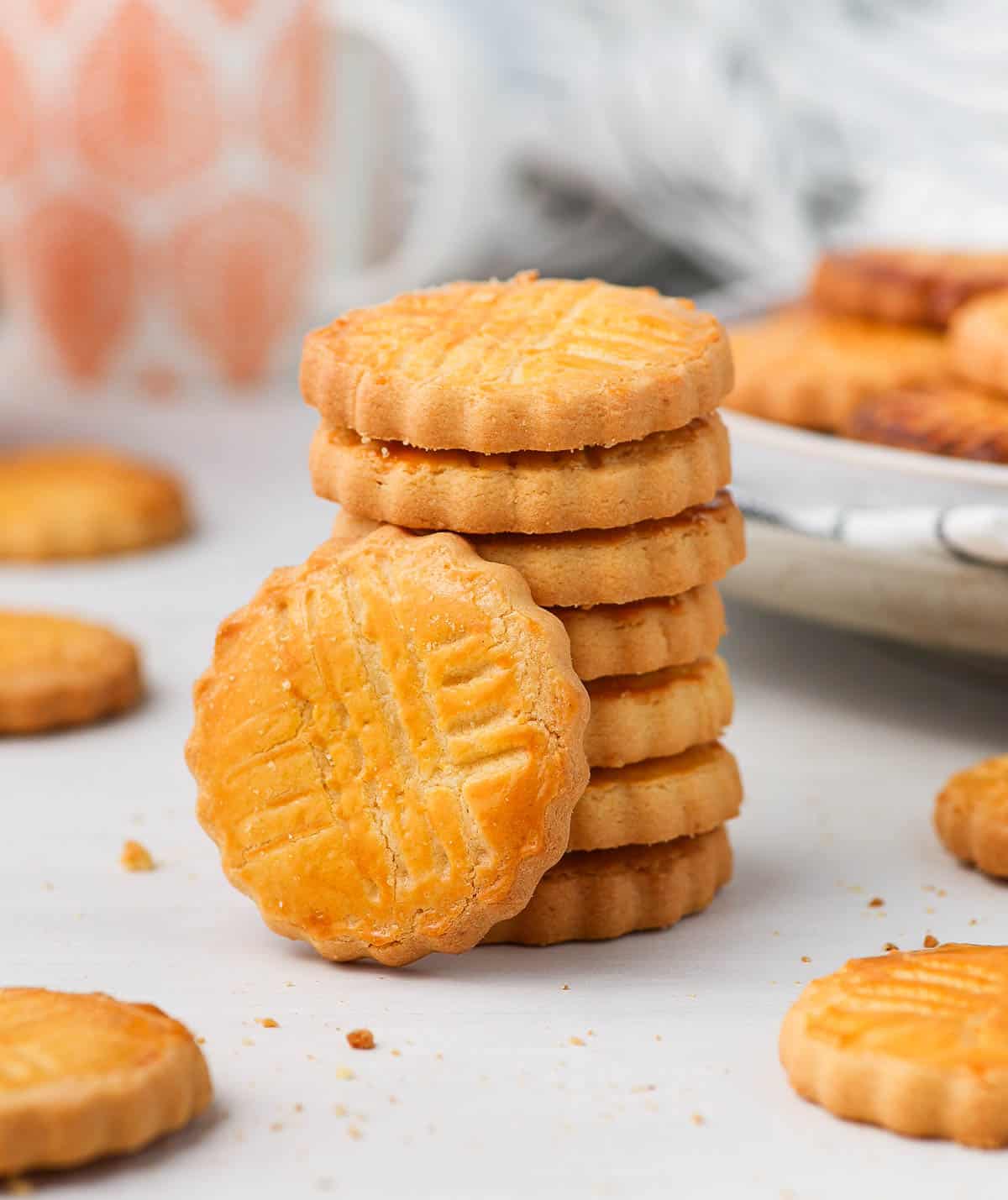
More French Desserts
- Cherry Clafoutis
- Raspberry Almond Madeleines
- Choux à la Crème (French Cream Puffs)
- Classic Ice Cream Profiteroles
- Easy Raspberry Coulis
- Choux au Craquelin
- Cannelés de Bordeaux
- Chocolate Financiers
Made this recipe?
Let us know if you liked it by leaving a comment below, and tag us on Instagram @a.baking.journey with a photo of your creation!
Recipe

Sablé Breton Cookies
Ingredients
- 3 Egg Yolks - at room temperature
- 75 gr (3/4 cup) Icing Sugar
- 100 gr (7 tablespoons) Salted Butter - very soft
- 175 gr (1 cup + 1 1/2 tablespoons) Plain / All-Purpose Flour
- 1/2 teaspoon Baking Powder
- 1 Egg Yolk - for the Egg Wash - optional
Disclaimer
I highly recommend using the measurements in grams & ml (instead of cups & spoons) for more accuracy and better results.
Instructions
- Take the butter out of the fridge at least 30 minutes before starting the recipe and pre-cut it into small cubes. The butter needs to be very soft, but not melted.
- Seperate your Egg Yolks and Whites. Keep the Egg Whites in the fridge for another recipe.
- In a large mixing bowl, whisk together the Egg Yolks and Icing Sugar for a couple of minutes or until smooth and pale.
- Add the very soft Salted Butter and whisk (or mix with a stiff spatula) until you get a thick, soft mixture.
- Sift in the Flour and Baking Powder. Work the dough with a stiff spatula or by hands to combine all the ingredients until you get a smooth cookie dough.
- Transfer the dough between two sheets of baking paper and roll it with a rolling pin to be about 6 mm (1/4 inch) thick (see note 1). Place in the fridge to chill for at least 1 hour - or overnight.
- Preheat your oven on 160'C/325'F. Prepare a baking tray lined with a baking mat or parchment paper (see note 2).
- Remove baking paper and cut out the cookies with a round or fluted Cookie Cutter, about 6cm (2,5 inch) wide (see note 3). Transfer the Sablés Bretons Cookies over the baking tray (see note 4).
- Optional: Use the back of a fork to create the cross pattern (if the fork sticks to the cookie, dip it in a little bit of water) then brush each cookie with the Egg Yolk for a golden finish.
- Bake for 15 to 18 minutes or until golden. Take out of the oven and transfer over a cooling rack until completely cool. Store in an air-tight container at room temperature for up to 5 days.
- Leftover dough can be re-rolled, chilled and baked.
Tried this recipe? Make sure to leave a comment and star rating below!
Notes
- You can roll the cookie dough thiner or thicker, but make sure to adjust the baking time accordingly.
- For the best result, use a perforated tray and perforated baking mat.
- You can cut out the sablés cookies smaller or larger, but again make sure to adjust the baking time accordingly.
- If the dough seems to be too soft to lift, place the dough back in the fridge for 5 to 10 minutes to harden.




